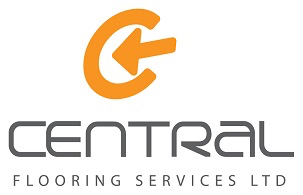Information
-
Document No.
-
Audit Title
-
Client / Site
-
Conducted on
-
Prepared by
-
Location
-
Personnel
29 CFR part 1926 subpart E personal protective life saving equipment
-
Is proper eye protection being used 1926.102
-
(a)(6)(i) shall provide adequate protection against the particular hazard for which they are designated
-
(a)(1) employee shall be provided with eye and face protection equipment when machines or operations present potential eye or face injury from physical chemical or radiation agents
-
Is proper had protection being used 1926.100
-
(a) employees working in areas where there is a possible danger of head injury from impact or from falling or flying objects or from electroshock and burns shall be protected by protective helmet.
29 CFR part 1926 subpart F fire protection and prevention
1926.150 fire protection
-
(a) The employer shall be responsible for the development of a fire protection program to be followed throughout all phases of the construction and demolition work, and he shall provide for the firefights equipment as specified in section 1926.150 subpart
-
(a)(1) access to all available fire fighting equipment shall be maintained at all times.
-
(e)(2) the alarm code and reporting instruction shall be conspicuously posted at phones and at employee entrances.
1926.152 Flammable liquids
-
Is fire protection required?
-
(e)(1) An alarm system e.g. telephone system, siren, ect.,shall be established by the employer whereby employees on the site and the local fire department can be alerted for an emergency.
-
(a)(4) all fire fighting equipment shall be periodically inspected and maintained in operating condition. Defective equipment shall be immediately replaced
(c) portable firefighting equipment
-
Are fire extinguisher available for use?
-
(c)(1)(i) A fire extinguisher, rated not less than 2A, shall be provided for each 3000 square feet of the protected building area, or major fraction thereof. Travel distance from any point of the protected area to the nearest fire extinguisher shall not exceed 100 feet
-
(c)(1)(ii) one 55 gallon drum of water with two fire pails may be substituted for a fire extinguisher having a 2A rating.
-
(c)(1)(vi) A fire extinguisher rated not less than 10 B, shall be provided within 50 feet wherever more than 5 gallons of flammable or combustible liquids or 5 pound flammable gas are being used on the job site. This requirement does not apply to the integral fuel tanks of motor vehicles
-
(C)(1)(iv). One or more fire extinguishers, rated not less than 2A, shall be provided on each floor. In multistory buildings at least one Fire extinguisher shall be located adjacent to stairways.
-
(c)(1)(viii) portable fire extinguisher shall be inspected periodically and maintained in accordance with maintenance and use of portable fire extinguisher,NFPA No. 10A-1970.
(b) indoor storage of flammable liquid.
-
Are chemicals stored at the location?
-
(a)(1) Only approved containers and portable tanks shall be used for storage and handling of flammable liquids. Approved safety cans or Department of Transportation approved containers shall be used for the handling and use of flammable liquids in quantities of 5 gallons or less, except that this shall not apply to those flammable liquid materials which are highly viscid (extremely hard to pour), which may be used and handled in original shipping containers. For quantities of one gallon or less, the original container may be used, for storage, use and handling of flammable liquids.<br>
-
(a)(2) Flammable liquids shall not be stored in areas used for exits, stairways, or normally used for the safe passage of people.<br>
-
(b)(1) No more than 25 gallons of flammable liquids shall be stored in a room outside of an approved storage cabinet. For storage of liquefied petroleum gas, see 1926.153
-
(b)(2)(I) Quantities of flammable liquid in excess of 25 gallons shall be stored in an acceptable or approved cabinet <br><br>
1926.153 liquefied petroleum gas (LP-Gas)
-
Are petroleum gas containers located at the job?
-
(a)(2) All cylinders shall meet the Department of Transportation specification identification requirements published in 49 CFR Part 178, Shipping Container Specifications.<br>
-
(I) storage of LPG containers with in the building is prohibited
-
(K )storage outside of buildings shall be located <br>500lbs - 0lbs = 0 feet<br>501lbs - 6000 lbs = 10 feet <br>6001lbs - 10000lbs = 20 feet<br>Over 10000lbs = 25
-
(I) Fire protection storage location shall be provided with at least one approved portable fire extinguisher 20-B-C
-
(n) LP gas shall be marked to identify their content.
Subpart H materials handling storage use and disposal 1926.250 general requirements for storage
-
Are materials for the job stored at the job location?
-
(b)(1) material stored inside buildings under construction shall not be placed within 6 feet of any hoistway or inside floor openings, nor within 10 feet of an exterior wall which does not extend above the top of the material.
-
(b)(5) Materials shall not be shored on scaffold or on runways in excess of supplies needed for immediate operations.
-
(b)(6) brick stacks shall not be more than 7 feet in height. When a loose brick stack reaches
-
(b)(7) when masonry block are stacked higher than 6 feet, the stack shall be tapered back one-half block per tier above the 6-foot level.
-
Is lumber stored at the job location?
-
(b)(8)(I) used lumber shall have all nails withdrawn before stacking.
-
(b)(8)(iii) lumber shall be so stacked as to be stable and self-supporting
-
(b)(8)(iv) lumber piles shall not exceed 20 feet in height provided that lumber to be handled manually shall not be stacked more than 16 feet high.
-
(c) housekeeping storage areas shall be kept free from accumulation of materials that constitute hazard from tripping, fire, explosion, or pest harborage. Vegetation control will be exercised when necessary.
1926.251 rigging equipment for material handling
-
Is rigging equipment stored at the job location?
-
(a)(1) rigging equipment for material handling shall be inspected prior to use on each shift and as necessary during its use to ensure that is safe. Defective rigging equipment shall be removed from service.
-
(a)(2) employees must ensure that rigging equipment <br> (a)(2)(I) has permanently affixed and legible identification markings as prescribed by the manufacturer that indicates the recommended safe working load <br> (a)(2)(iii) not be used without affixed legible identification markings required by paragraph (a)(2)(I).
-
(a)(3) rigging equipment when not in use shall be removed from the immediate work area so as not to present a hazard to employees
1926.251 rigging equipment (alloy steel chains)
-
Are chains for rigging located at the job location?
-
(b)(1) welded alloy steel chain slings shall have permanently affixed durable identification stating size, grade, rated capacity, and sling manufacturer.
-
Whenever wear at any point of any chain link exceeds that shown in table H-1 the assembly shall be removed from service.
-
(b)(6) inspection. <br> (b)(6)(I) in addition to the inspection requirements by other paragraphs of this section, a through periodic inspection of alloy steel chain slings in use shall be made on a regular basis, to be determined on the basis I of:<br>(A) frequency of sling use <br>(B) severity of service condition<br>(C) nature of lifts being made <br>(D) inspections shall in no event be at intervals greater than once every 12 months.
-
(b)(6)(ii) the employer shall make and maintain a record of the most recent month in which each alloy steel chain sling was thoroughly inspected and shall make such records available for examination.
1926.251 rigging equipment (wire rope)
-
Are wire ropes for rigging located at the job location?
-
(c)(2) protruding ends of strands in splices on slings and bridles shall be covered or blunted.
-
(c)(3) wire ropes shall not be secured by knots
-
(c)(4)(ii) except for eye splices in the end of wires and for endless rope slings, each wire rope used in hoisting, or lowering, pulling loads shall consist of one continuous piece without knots or splice
-
(c)(4)(iii) eyes in wire rope. Bridles, slings, or bull wires shall not be formed by wire rope clips or knots
-
(c)(4)(iv) wire rope shall not be used if, in any length of eight (8) diameters, the total number of visible broken wires exceeds ten percent (10) of the total number of wires, or if the rope shows other signs of excessive wear, corrosion,or defects.
1926.251 rigging equipment (natural rope and synthetic fiber)
-
Are fiber slings used for rigging located on the site?
-
(d)(6) removal from service: natural and synthetic fiber rope slings shall be immediately removed from service if any of the following conditions are present <br>(d)(6)(I) abnormal wear <br>(d)(6)(ii) powdered fiber between strands<br>(d)(6)(iii) broken or cut fibers <br>(d)(6)(iv) variations in the size or roundness of strands. <br>(d)(6)(v) discoloration or rotting<br>(d)(6)(vi) distortion of hardware in the sling.
-
1926.252 disposal of waste materials
-
Are waste materials being disposed of at the job?
-
(a) whatever materials are drop one more than 20 feet to any point lying outside exterior wall of the building, an enclosed chute of wood or equivalent material, shall be used. For the purpose of this paragraph, an enclosed chute is a slide, close in on all sides, through which material is moved from a high place to lower one.
-
(b) when the debris dropped through holes in the floors without the use of chutes, The area onto which the material is drop shall be completely enclosed with barricades not less than 42 inches high and not less than 6 feet back from the projected edge of the opening above. Signs warning of the hazard of falling material shall be posted each level. Removal shall not be permitted in the lower area until debris handling ceases about.
-
(c) all scrap lumber waste material and rubbish shall be removed from the immediate work area as the work progresses.
-
(e) all solvent waste, oily rags, and flammable liquid shall be kept in fire resistant covered containers until removed from worksite.
Subpart I tools – hand and power
1926.300 general requirements
-
Are hand and power tools used the job location?
-
(a) condition of tools all hand and power tools and similar equipment, whether furnished by the employer or the employee, shall be maintained in a safe condition.
-
(b) guarding<br>(b)(1) when power operated tools are designed to accommodate guards, they shall be equipped with such guards when in use.
-
(c) personal protective equipment. Employees using Hand and power tools and exposed to the hazards of falling, flying,abrasive, and splashing objects, or exposed to harmful dust, fumes, mist, vapors, or gases shall be provided with the particular personal protective equipment necessary to protect them from the hazard. All personal protective equipment shall meet the requirements and be maintained according to subpart D and E of this part.
1926.301 hand tools
-
Are hand tools used at the job?
-
(a) employers shall not issue or permit the use of unsafe hand tools
-
(b) wrenches, including adjustable pipe, end, and socket wrenches shall not be used when jaws are sprung to the point that slippage occures
-
(c) impact tools such as drifts pins, wedges, and chisels, shall be kept free of mushroomed heads.
-
(d) the wooden handles of tools shall be kept free shall be kept free of splinters or cracks and shall be kept tight in the tool.
1926.302 power operated hand tools
-
Are power operated hand tools used used at the location?
-
(a)(1) electric power operated tools shall either be of the approved double-insulated type or ground in accordance with subpart K of this part.
Are pneumatic power tools
-
Are pneumatic power tools used at the location?
-
(b)(1) pneumatic power tools shall be secured to the hose or whip by some positive means to prevent the tool from becoming accidentally disconnected
-
(b)(3) all pneumatically driven nailers, staplers and other similar equipment provided with automatic fasteners feed, which operate at more than 100psi pressure at the tool shall have a safety device on the muzzle to prevent the tool from ejecting fasteners, unless the muzzle is in contact with the work surface.
1926.303 Abrasive wheels and tools
-
Are abrasive wheels and tools used at the location
-
(b) guarding <br>(b)(1) grinding machines shall be equipped with safety guards.
-
(b)(2)(i) safety guards on all operations were the work provide a suitable measure protection to the operator, maybe so constructed that the spindle end, nut, and outer flange are exposed; and where the nature of the work is such as to entirely covered the side of the wheel, The side covers of the guard maybe omitted; and <br><br>(b)(2)(ii) The spindle end nut and outer flange may be exposed on machines designed as portable saws.











